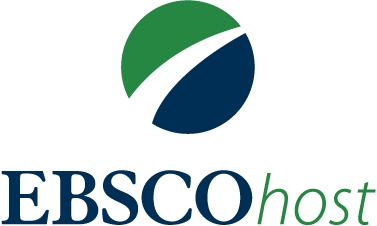Effect of EVA, CFROI, MVA and CVA Methods on Shareholders Value Maximization and Financial Performance Estimation: An Empirical Study
Abstract
With the globalization of markets, competition and performance pressure have accelerated. Investors rightfully expect a reasonable return on the capital they make available to others. Since companies often achieve their growth through capital obtained from new shareholders, the pressure on company profitability increases significantly. The capital market rewards companies' good performance and also punishes their bad performance. At this point, Economic Value Added (EVA), Cash Flow Return on Investment (CFROI), Cash Value Added (CVA) and Market Value Added (MVA), which ensure value maximization, have become increasingly important problems. For this reason, company profitability and growth potential are important. Within the scope of this study, the importance of EVA, CFROI, CVA and MVA indicators and their comparison with traditional methods are discussed in the introduction part. Studies on these indicators that embody value maximization are examined through a literature review. In the methodology section, the data of 11 companies active in the healthcare sector listed on Borsa Istanbul are analyzed through regression and correlation analyzes on the basis of the 2015-2021 period, and the effects of these indicators on stock returns. As a result, when MVA, CVA, CFROI and EVA are positive, economic profit is achieved and shareholder value is expected to increase.
Metrics
References
Akalu, M. M. & Turner, J. R. (2002). Adding shareholder value through project performance measurement, monitoring & control: A critical review. (ERIM Report Series reference number ERS-2002-38-ORG) Erasmus Research Institute of Management (ERIM) Erasmus Universiteit Rotterdam.
Basaran, N. (2018). Economic value added-market value added relationship: An application in BIST cement sector. [Unpublished doctoral dissertation]. Niğde Ömer Halisdemir University.
Bayrakdaroğlu, A. (2009). The relationship between shareholder value and traditional and contemporary financial performance measures: an application on ISE companies. [Unpublished doctoral dissertation]. Erciyes University.
Bayyurt, N. (2007). The importance of performance evaluation in businesses and the relationships between performance indicators. Journal of Social Policy Conferences, (53), 577– 592. https://dergipark.org.tr/en/pub/iusskd/issue/898/10090
Bognarova, K. J. (2017). Analysis of the relationship between economic value added and market value added. Challenges of the Knowledge Society, Finance and Accounting, 5(13), 793-796.
Brigham, E. F., & Houston, J. F. (2001). Fundamentals of financial management: Concise (3.rd ed.). Harcourt College Publications.
Chandra, P. (2011). Financial management, theory and practice. (8.nd ed.).Tata McGraw‐Hill Education Private Limited Company.
Chen, S., & Dodd, J. L. (1997). Economic value added (EVA): An empirical examination of a new corporate, Journal of Managerial Issues,9(3), 318-333
Damodaran, A. (1999). Value creation and enhancement: Back to the future. (NYU Working Paper No. FIN-99-018). Leonard N. Stern School of Business. Retrieved February 26, 2023, from https://papers.ssrn.com/sol3/papers.cfm?abstract_id=1297053 .
Damodaran, A. (2018). The Dark Side of Valuation: Valuing Young, Distressed, and Complex Businesses. (3rd ed.). Pearson FT Press
Ehrbar, A. (1998). EVA is the real key to creating wealth. John Wiley & Sonse, Inc.
Erasmus, P. (2008). The relative and incremental information content of the value-based financial performance measure Cash Value Added (CVA). Management Dynamics. Journal of the Southern African Institute for Management Scientists, 17 (1), 2-15. Retrieved February 19, 2023, from https://hdl.handle.net/10520/EJC69734 .
Figankaplan, T. (2021). The relationship between financial performance and economic added value in the banking sector: A study on banks traded on BIST. [Unpublished doctoral dissertation]. Istanbul Commerce University.
Grant, J. L. (1997, December 01). Value Based Management: Economic Value Added or Cash Value Added?, Working Paper, FWC AB Study No. 1997:3. http://dx.doi.org/10.2139/ssrn.156288 DOI: https://doi.org/10.2139/ssrn.156288
Günther, T., Landrock, B., & Muche, T. (1999). Profit Versus Value Based Performance Measures: An Empirical Investigation Based on the Correlation with Capital Market Returns for German DAX-100 Companies. Technische Universität Dresden, Fakultät Wirtschaftswiss.
Gümüş, Ü. (2018). Economic added value in company performance measurement: An application on cement sector companies traded in BIST 100. [Unpublished Master's Thesis]. Adnan Menderes University.
Gürbüz, A. O., & Ergincan, Y. (2004). Ekonomik Katma Değer (Economıc Value Added) (EVA©) ve Net Kar: İMKB’deki Hisse Senedi Fiyatlarının Analizi (1995-2000). Öneri Dergisi, 6(21), 33-42. https://doi.org/10.14783/maruoneri.680051 DOI: https://doi.org/10.14783/maruoneri.680051
Oskuei, HR & Maleki, M. (2007), The information content of cash value added (CVA) and p/e ratio: evidence on association with stock returns for industrial companies in the tehran stock exchange, Iranian Accounting and Auditing Review, 14 (47) 21-36.
Helfert, E. A. (2000). Techniques of financial analysis, A Guide to Value Creation, (10th ed.). Edition, McGraw Hill Professional.
Jacobs, J. F. (2014, October 31). The Quest for Value Revisited http://dx.doi.org/10.2139/ssrn.440100 DOI: https://doi.org/10.2139/ssrn.440100
Kara, H. (2005), Katma Değer Yaratmaya Dayalı Finansal Performans Ölçütü Olarak EVA (Economic Value Added) İMKB Şirketleri Üzerine Bir Uygulama, SPK Yayınları, Yayın No. 184.
Kırlı, M., Kuğu, TD & Kara, İ. E. (2013). Cash value added method (CVA) in measuring financial performance and an application in companies listed on Borsa Istanbul. Journal of Social Economic Research, 13 (26), 98-123.
Köroğlu, A. (2008). Calculation of economic added value in the liquidation of banks and its application in the Turkish banking sector. [Unpublished doctoral dissertation]. Gazi University.
Küçükkapılı, N. (2011). Economic value added (EVA) and market value added (MVA) methods and the relationship between them in determining business performance: ISE 100 example. [Unpublished Master's Thesis]. Yıldız Technical University.
Li, Yan-Xi, Guoxiao, Y. (2003), Selection of performance measurement methods in corporations: CVA or EVA? Journal of Dalian University of Technology, 3, 12-27.
Martin, J. D. & Petty, J. W. (2000). Value based management: The corporate response to the shareholder revolution. Harvard Business School Press.
Mert, H. & Demir, S. E. (2016). Effects of depreciation methods on performance measurement methods: a case of energy sector. Journal of Economics Finance and Accounting, 3 (4), 330-344. https://doi.org/10.17261/Pressacademia.2016.347 DOI: https://doi.org/10.17261/Pressacademia.2016.347
Nakhaeı, H. & Hamid, N. (2013). Analyzing the relationship between Economic Value Added (EVA) and accounting variables with share market value in Tehran Stock Exchange (TSE). Middle-East Journal of Scientific Research, 16(11), 1589-1598. https://doi.org/10.5829/idosi.mejsr.2013.16.11.12053
Okumuş, H. Ş. (2004). Economic added value and market performance, Gazi Bookstore.
Özevren, M. (2008). Value management in businesses, Beta Publishing.
Öztürk, M. B., & Şahin, E. E. (2013). Finansal performansın ölçülmesinde nakit akımına dayalı bir yöntem nakit katma değer. Verimlilik Dergisi (Journal of Productivity) (3), 7-17. https://dergipark.org.tr/en/pub/verimlilik/issue/21764/233936
Powell, S. (2004). The challenges of performance measurement. Management Decision 42 (8), 1017-1023. DOI: https://doi.org/10.1108/00251740410555515
Santos, F. M., Lucianetti, L. and Bourne, M. (2012). Contemporary Performance Measurement Systems: A review of their consequences and a framework for research. Management Accounting Research, 23 (2), 79–119. DOI: https://doi.org/10.1016/j.mar.2012.04.001
Şamiloğlu, F. (2004, Ekim). Ekonomik Katma Değer: İstanbul Menkul Kıymetler Borsası’nda Örnek Olay İncelemesi, Muhasebe ve Finansman Dergisi, (24), 150-157.
Schäffer, U. & Lewerenz, U. (2011). Die entwicklung der wert-orientierten unternehmenssteuerung im DAX. Controlling & Management, 55 (5), 295-298. DOI: https://doi.org/10.1007/s12176-011-0088-5
Stewart, G. B. (1991). The quest for value: The EVA management guide. HarperCollins Publishers
Subramanyam, D. & Kumar, K. (2020). Performance evaluation and partners value maximization through CFROI and EVA: An empirical study. International Journal of Application or Innovation in Engineering & Management 9 (1),42-45
Topal, Y. (2008). The relationship between Economic Value Added (EVA) and Market Value Added (MVA). Example from ISE manufacturing enterprises. Süleyman Demirel University Faculty of Economics and Administrative Sciences Journal, 13 (2), 249 – 261.
Ünlü, U. (2014). Yatırımın Nakit Akım Karlılığı (CFROI) ve Nakit Katma Değer (CVA) Yöntemi: Borsa İstanbul’da İşlem Gören Çimento Firmaları Üzerine Ampirik Bir Uygulama. Eskişehir Osmangazi Üniversitesi İktisadi ve İdari Bilimler Dergisi, 9(2), 169-187.
Yaman, K. & Kurtlar, M. (2022). Effect of EVA and CFROI methods on shareholders value maximizing and financial performance estimation: An empirical study. Journal of Finance, Economics and Social Research, 7 (4), 861-871 https://doi.org/10.29106/fesa.1202471 DOI: https://doi.org/10.29106/fesa.1202471
Yılgör, A. (2005). Economic Value Added (EVA) and Market Value Added (MVA) methods in evaluating business performance and examining the power of these methods to explain stock returns. ISE 100 example. Ankara University SBF Journal, 60 (1), 225-248.
Yilmaz, T. (2013). Performance analysis of industrial companies traded on the ISE based on economic added value and market added value. [Unpublished Master's Thesis]. Fatih University.
Young, S. D. & O'Byrne, S. F. (2001). EVA and Value-Based Management: A Practical Guide to Implementation. McGraw-Hill.






















